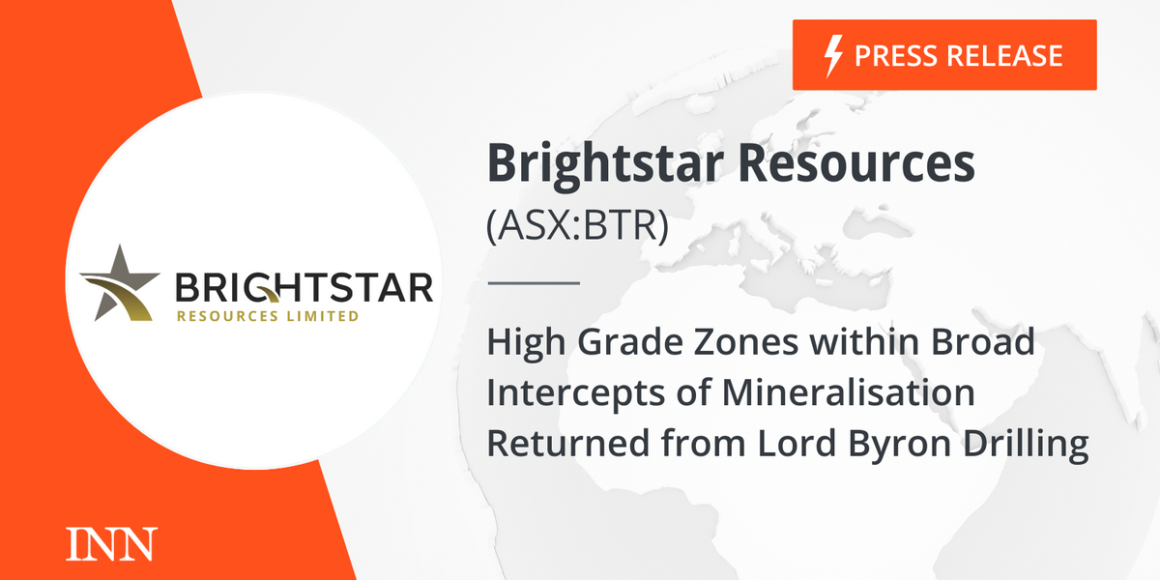HIGHLIGHTS
Brightstar’s Managing Director, Alex Rovira, commented “These new Lord Byron assays are particularly exciting. The results have shown the wide intervals of great, open pit mineable gold grades, but also contain discrete zones of high-grade, including in some of the deeper holes, at the base of a A$3,000/oz Au optimised pit shell. These highly encouraging results will feed into updated development studies at the deposit, as outlined in the recent Jasper Hills Scoping Study1.
With successful RC programs now complete at Fish and Lord Byron, the Jasper Hills project is rapidly advancing. Once the RC assays are received from the Fish deposit, attention will turn to geotechnical and metallurgical testwork utilising the diamond core material produced from the drilling program concluding in the coming weeks.
With the current drilling program ending and both rigs soon demobilising, a short drilling break will allow assays to be returned and geological interpretations to be updated, prior to resource updates across the projects. Drilling will then restart, with a large program being planned at the company’s exciting new Sandstone assets set to commence once those transactions complete.
TECHNICAL DISCUSSION
The Lord Byron deposit consists of a ‘Main Zone” of mineralisation associated with the northwest-trending Bicentennial Shear Zone. This 100m-wide zone of shearing hosts the bulk of the mineralisation at the deposit. Additional mineralisation is also present in supergene lodes, and as primary gold in banded iron units (BIF) that have been deflected and truncated by the Bicentennial Shear. The RC drilling program at the Lord Byron totals 54 drill holes for ~8,000m of drilling, with all assays now returned.
An additional diamond program is ongoing, totalling 13 holes for 1,700m (including 7 diamond ‘tails’ drilled as extensions to existing RC drillhole pre-collars). Assays remain outstanding for all diamond holes, with 6 short diamond tails remaining to drill to complete the program.
The purpose of this combined RC and DD program was to infill the resource within optimised open pit shells, provide material for metallurgical and geotechnical assessment, facilitate an upgrade of the MRE to indicated or better classification, and potentially delineate Ore Reserves in conjunction with the Definitive Feasibility Study.


Leave a Reply